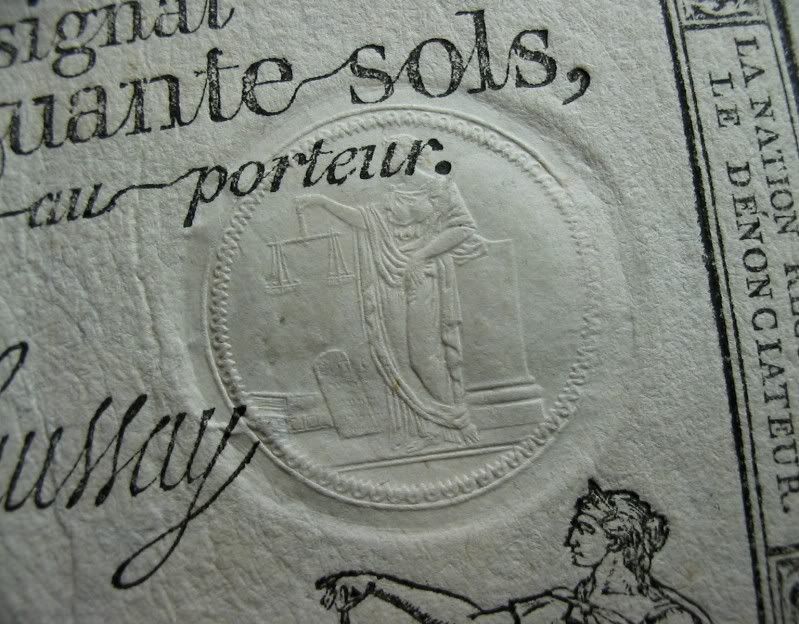A simple dry stamp or a less complicated watermark are not enough to prevent forgers to counterfeit banknotes.
When it comes to security marks, certain solutions were found in the type of paper that was used for producing the notes.
Later on, I'll come back on the security marks that can be found in the printing process.
More basic security is in the paper itself.
The old Assignats in my previous post were made out of very cheap, common paper.
As soon as the banknote got folded too many times, it was doomed to break in two.
The ink didn't hold too well either, and not to mention the fact that a note that got wet, was bound for (self)destruction.
Ok, we're not supposed to go swimming with our banknotes (unless you're Dagobert Duck), but in rainy areas (like most parts of Europe), water was, is and will always be an enemy of the paper banknotes.
The use of certain plastics was not known in the beginning, but cotton offered a reliable solution at that time.
 |
| making paper out of old paper pulp |
 |
| cotton plant |
Where normal paper is made of wood pulp or recycled paper, banknote paper is an end product of the cotton plant. The seed fluff from the cotton fibers are stirred untill they loosen.
The firsty belgian banknotes were printed on wood free paper.
To lower the costs, for normal paper, we can use old paper in stead of wood.
For
banknotes, old cotton rags were used. They were pressed and grinded but
that process was an art on its own. The shorter the fibers, the more
fragile the paper was. But longer fibers resulted in an unclear
watermark.
In order to make the paper stronger again, hemp and linen was added.
The
security feature that I wanted to show today, has in fact nothing much
to do with printing yet, (as this will follow in the future), but with
the process of the paper making.
When the paper is made,
additional fibers can be added.
This is impossible to copy, as it is part of the paper itself.
To make a reliable copy, you should have to used paper with fibers itself.
German Empire banknotes are fine examples of the use of coloured fibers in their banknotes.
 |
| german empire notes detail : red or blue fibers |
 |
| german empire notes detail : red and blue fibers |
 |
| detail banknote of Sudan |
 |
| detail former swiss banknotes |
 |
| detail russian banknote 2007 |
 |
| detail banknote of Türkmenistan |
It's a technique that is still used, not only for banknotes, but also for stamps.
 |
| detail of a swiss stamp, with fibers |
to be continued...





















